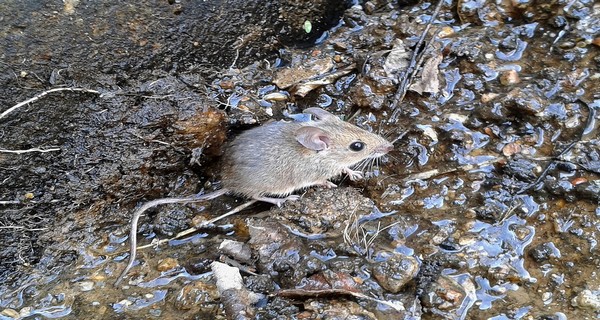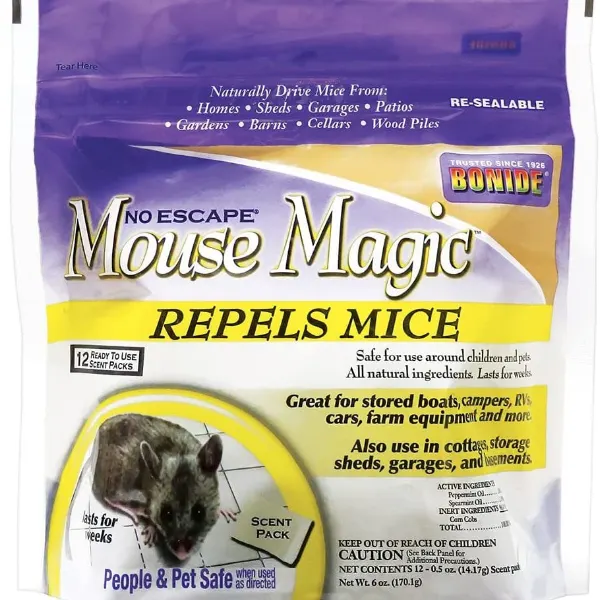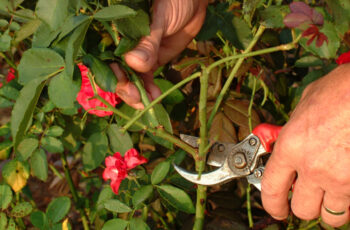Ad Blocker Detected
Our website is made possible by displaying online advertisements to our visitors. Please consider supporting us by disabling your ad blocker.

Signs You Have Mice
If you’ve spotted one mouse in your house, chances are there are likely more lurking unseen. Mice tend to seek refuge in walls or behind furniture and appliances until they feel it’s safe — typically during the night while you’re asleep. However, merely observing a mouse isn’t the sole indicator of an issue. Additional signs of a mouse infestation include:
- Discovering droppings resembling dark grains of rice. (Larger droppings may suggest a rat infestation.)
- Noticing debris on your pantry shelves from gnawed food packaging or finding holes in cardboard food containers.
- Coming across sizable holes chewed into blankets, furniture, or mattress upholstery.
- Finding remnants of fiberfill stuffing, torn rags, or wood shavings in corners of unused rooms, beneath sinks, or behind appliances and hefty furniture.
- Hearing scratching noises emanating from within your walls.
- Coming upon chewed electric wires or experiencing sudden malfunctions in your electronic devices.
- Observing your dog or cat fixated on appliances or attempting to scratch behind furniture.
How Mice Get Into Your Home
Much like humans, mice seek out environments where they can easily access food and water, and where they can find comfort without the worry of disturbances. During colder or wetter seasons, your home becomes significantly more appealing to them compared to outdoor living. They don’t require an invitation to enter either; a mouse can slip into your home through a crack as minuscule as a dime.
How To Get Rid Of Mice Naturally
Use Natural Repellents
Ultimately, there are highly potent natural repellent packs and sprays available in the market (refer to the list below) that excel at keeping mice at a distance.
Not only are they effective for safeguarding areas, but they prove even more invaluable when placed within equipment, vehicles, and compact spaces that mice are fond of inhabiting. When it comes to shielding equipment and wires, these products are the top choice!
Among the most effective natural repellents are peppermint oil and cinnamon oil. Mice simply find the robust aroma of either oil unappealing. These oils can be utilized as a spray to imbue openings and areas frequented by mice.
What’s even better is that these scents have been transformed into entirely natural packets or sachets that can be positioned in engine compartments, vehicles, and any small nooks that mice are prone to occupy, chew, and potentially damage. They prove exceptionally efficient at safeguarding these spaces.
3 Great Mice Repelling Products:
- Bonide Mouse Magic Mouse Repellent Scent Packs
- Grandpa Gus’s Extra-Strength Mouse Repellent, Cinnamon/Peppermint Oils Repel Mice
- Mouse and Rat Repellent Natural Non-Toxic Spray for Indoor and Outdoor Use

Choose The Mouse Right Trap
When it comes to eliminating mice, there’s essentially one method: using a trap. The choice of trap depends on whether you prefer a natural, non-lethal approach or not.
Live Traps
These humane, no-kill traps allow you to “catch and release” mice. However, it’s important to note that you’ll need to transport captured mice at least a mile away from your home before setting them free in the wild.
In cases of severe infestations, this may entail multiple trips. It’s worth mentioning that using these traps does carry a health risk, as you will inevitably come into contact with a mouse. Therefore, they are not advised for households with pets or young children.
Snap Traps
The traditional spring traps are straightforward to set up and come at a low cost. They’re readily available in hardware stores. They typically dispatch mice swiftly, but the sight of the deceased mouse can be unsettling for some.
Due to the rapid snapping action of the steel trap, these devices are not recommended for households with pets or young children, as they pose a safety risk.
Electric Traps
Battery-operated traps deliver lethal shocks to mice that enter them. While they come at a slightly higher cost, they are also reusable. Unlike some other trap types, you can dispose of the dead mouse without having to directly handle it — simply remove the disposable chamber and discard it in the trash. This type of humane trap is considered safe for use around children and most pets as well.
Bait Stations
This method involves using poison contained in a dispenser. It provides a relatively swift and cost-effective solution, especially if you have only one or two mice. However, there’s a potential downside: a poisoned mouse may retreat into your walls to die, resulting in an unpleasant odor that can linger for a few weeks. Moreover, if you have pets, there’s a risk they may consume a poisoned mouse and become unwell as a result.
Use A Bait That Attracts Mice
While cheese may be the classic bait in cartoons, peanut butter is actually more effective. Mice can detect its scent from a distance, and they are particularly fond of nuts, making peanut butter the top choice for baiting mouse traps.
If you don’t have peanut butter on hand, nuts or seeds, including birdseed, can also be effective alternatives. Whichever bait you opt for, it’s advisable to wear gloves when loading the trap. Mice have highly sensitive senses of smell and tend to avoid objects that have recently been touched by humans.
Where To Place Mouse Traps
Even the most enticing bait won’t yield results if you don’t place traps in strategic locations. Naturally, it’s essential to position a baited mousetrap wherever you observe signs of nesting activity. Additionally, consider placing traps behind bulky furniture and appliances, inside cupboards beneath sinks, along the base of garage or attic walls, and atop kitchen cabinets if they don’t extend all the way to the ceiling. These spots are all likely areas where mice may frequent, increasing the chances of successful trapping.
Steps To Keep Mice Out Of Your Home For Good
You can go to the next page to read the rest of this article


